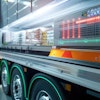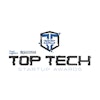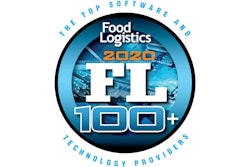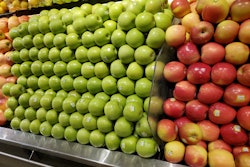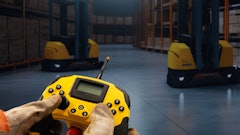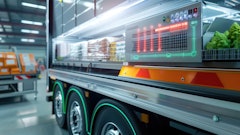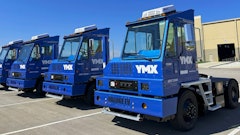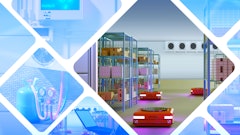
The cold food and beverage supply chain is arguably one of the most complex worldwide, given the perishable nature of the products it transports, such as fruits and vegetables, dairy, fish and meat. Conditions like temperature and humidity are constant variables, and even minimal change in these could have a devastating impact on entire shipments.
What’s more, these goods are sourced from a diverse range of environments and locations. The long distances involved in these logistic operations means it’s vital for companies to protect these goods at every stage in transit to avoid damage, spoilage and security risks such as theft — all of which can have significant unfavorable effects on a company’s reputation. Deploying better-suited solutions to food and beverage companies could reduce food waste annually by $150 million, but is there a way to do this across the entire supply chain journey? This is where environmental monitoring technology and the Internet of Things (IoT) comes in.
By incorporating real-time tracking technology, for example, IoT-enabled sensors can provide companies constant, accurate information. This allows them to control each stage of their shipment and reduce the chance or spoilage or damage by rerouting the journey or adjusting transit conditions as needed.
To understand how the data collected by these systems could improve supply chain operations in food and beverage, it’s essential to first know how the technology works, its benefits and how it can have a long-lasting impact on the industry.
How IoT-enabled environmental monitoring works
IoT is a vast network of objects with embedded microchips, sensors and communication capabilities that connect people, machines and systems through the internet. As the integration of devices with internet connectivity increases, the IoT market is expected to grow over $3 trillion annually by 2026. IoT devices such as smart TVs and manufacturing sensors have been adopted by consumers and businesses alike; now, they have significant potential to help transform the food and beverage industry.
In cold food and beverage supply chains, IoT-enabled sensors can monitor products and their environmental conditions, including temperature, humidity, light, shock, tilt and location. These sensors could be part of the goods container, located in transportation trucks or placed on individual storage units. The information they capture is shared through global wireless networks in real time. This constant exchange of information has the power to improve operations between suppliers and buyers by providing detailed information about eventualities that may occur as goods move through the supply chain.
The key benefits of IoT-enabled environmental monitoring
Because of the delicate nature of perishable foods, product quality begins to deteriorate from the moment goods are sourced and continues until they’re consumed. However, the slightest change in environmental conditions can result in the spoilage or contamination of a shipment. For example, a higher moisture level in the atmosphere leads to the development of mold and toxins in nuts that can result in a loss of quality and economic value and create food safety issues. IoT-enabled sensors with real-time tracking capabilities can prevent this by providing real-time notifications when conditions change during transit, allowing companies to make adjustments quickly to preserve food quality.
Products are also prone to damage caused by shock and tilt, which reduces shipment values. Real-time tracking helps paint a clearer picture of exactly where and when damage occurs, reducing risk.
Theft is another major industry concern that IoT technology can help mitigate. In 2019, food and beverage was affected by this type of crime more than any other industry, accounting for 29% of all cargo theft worldwide, with the median value of individual incidents ranging from $100,000 in South America to a little more than $11,000 in parts of Asia. With an IoT-enabled supply chain, GPS technology can be used to track shipments and ensure they keep to prescribed routes. Light-detecting sensors also allow companies identify unauthorized access to shipments (e.g., when a truck door is opened), providing the specific location, time and duration of breaches.
Solving issues with real-time data tracking
Today, data is the most sought-after commodity; it has been for many years. Everything in our lives that involves a data touchpoint, from phones to cars, is constantly processing information to automate a new action or drive decision-making. Historically, food and beverage companies have addressed supply chain issues after they occurred; however, constant monitoring enabled by IoT tracking devices allows them to take immediate action when problems such as theft or damage are in progress. For example, a sensor can notify a delivery worker if there’s a sudden spike in temperature during a seafood shipment, so they can check for issues with the transport cooling unit in real time.
Beyond the immediate control, environmental monitoring technology also has the potential to drive the food and beverage supply chain toward a more data-driven future. The rich analytics it provides over time allows companies to get to the root cause of problems and use data to guide strategic decisions on delivery routes and methods. This not only solves operational issues, but could help to secure new deals with trading partners, as companies can demonstrate their ability to guarantee the delivery of products to the highest standards.
Supply chain companies need to implement IoT-backed GPS tracking to confront accountability issues they may have with service level agreements (SLA). Third-party logistics (3PL) may be a part of a product's journey, making it difficult for companies that do not have real-time tracking to know if SLAs are being met. By geo-fencing designated areas and routes, fleet managers have greater visibility into the supply chain. For example, they can receive a notification when the cargo arrives at a milestone, such as a port or an international border. By having real-time eyes on a product, a company can intervene as events happen and not wait to act after they occur.
Environmental monitoring can improve compliance and quality assurance. Devices with real-time tracking capabilities can improve logistics from the moment a product is harvested by providing accurate estimates of a shipment’s shelf life or notifying authorities if there’s a suspicion of theft. The food and beverage industry has a lot of room for improvement when it comes to accountability with shipments. To illustrate, a study conducted by BCI determined that 63% of companies have no visibility into their supply chain. Now, IoT-enabled sensors are changing how the industry operates, but in the long run, they will transform how the entire supply chain functions, changing the relationship among suppliers, companies and customers when it comes to accountability, health and the value of food.
Why IoT-enabled environmental monitoring is an investment for the future
IoT-enabled environmental monitoring allows food and beverage companies to monitor and protect products at every stage of their supply chains while collecting rich, actionable data. The fact is that data is fueling smarter business decisions across all industries, and we should not expect this to change. Ever.
Although there are costs to get up and running, the technology is endlessly scalable. It takes only a few sensors to start harvesting data, gaining granular insights and seeing results. So, even with a relatively modest infrastructure to start, you can reap real benefits and continue scaling up as necessary. With the ability to improve food quality and safety, reduce the risk of theft and improve reliability and trust with trading partners and consumers, you should see environmental monitoring technology not as a cost, but as a worthwhile investment for the future.
And, once you see the very real benefits all along your supply chain, from harvest to consumer, it’s hard to envision conducting operations without IoT enabled-environmental monitoring.


